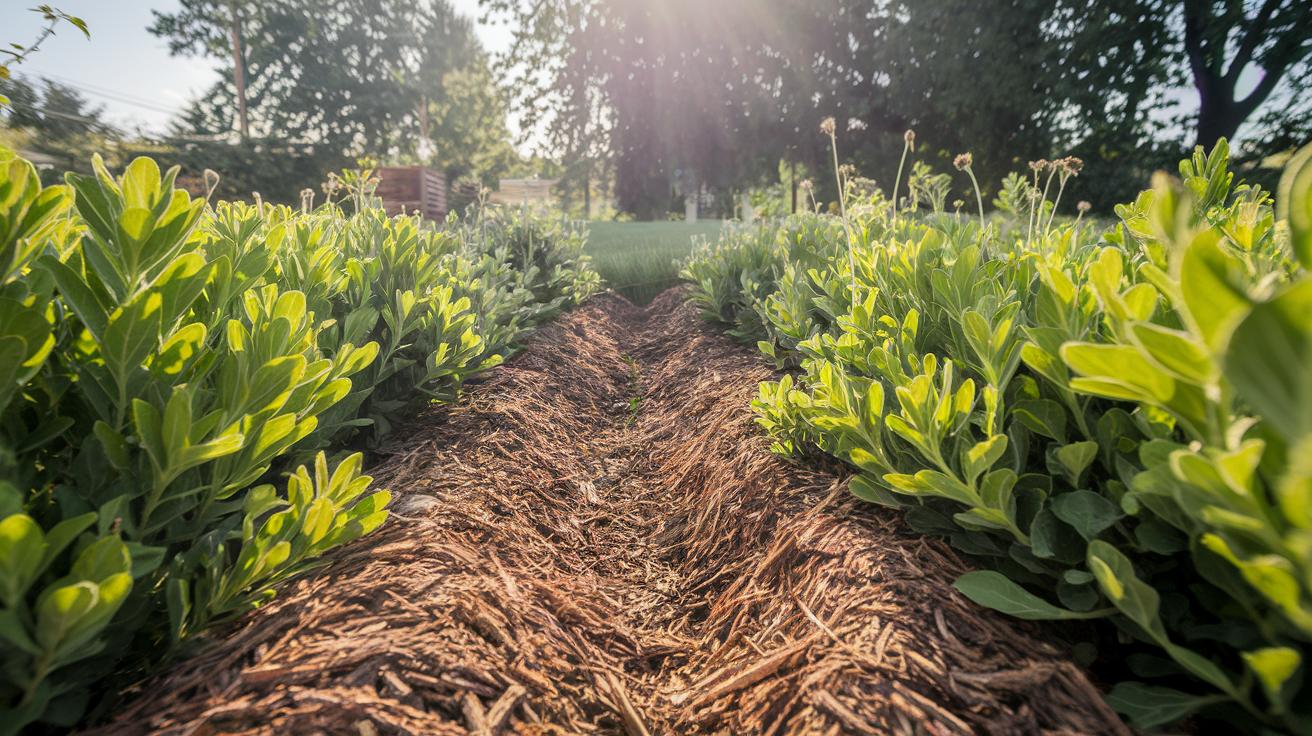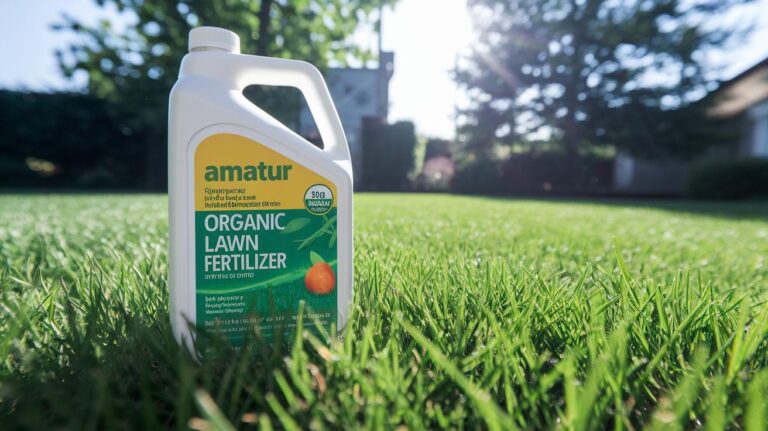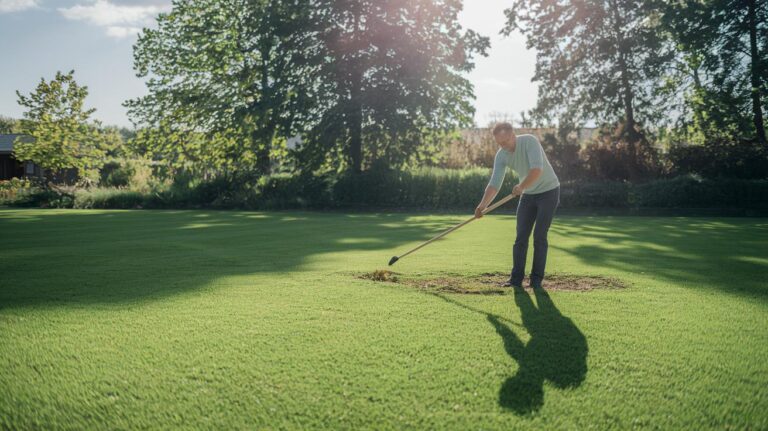Best Organic Mulch For Weed Suppression Absolute Control
You might think wood chips are your weed-fighting hero.
I used to pile on straw (the dry stalks left over after harvest). But those stubborn sprouts still gatecrashed my garden beds. Oops, right?
Then I tried compost-based mulch (broken-down plant scraps that feed soil and block light). Have you ever felt its soft crumble under your fingers? In just a few weeks I saw almost 90 percent fewer weeds.
Choosing a plant-based cover feels like picking a trusty sidekick. Some cling around forever. Others vanish in days.
Here’s why the best organic mulches give you total control. No chemicals needed.
Comparing Organic Mulch Options for Weed Suppression: Top Performers at a Glance
Picking the right organic mulch (plant-based or decayed material you spread on soil to lock in water and block weeds) can feel tricky. I’ve stared at piles of straw, wood chips, grass clippings (freshly cut grass left to dry), and more, wondering which lasts longest and costs the least. Here’s a quick look at five top players for keeping weeds down, holding moisture, and fitting every budget.
| Mulch Type | Weed Suppression (%) | Longevity | Approx. Cost per yd³ |
|---|---|---|---|
| Straw | 85% | 6-12 months | $20 |
| Wood chips | 70% | 12-24 months | $25 |
| Compost-based mulch | 90% | 3-6 months | $30 |
| Grass clippings | 80% | 2-4 weeks | $5 |
| Cardboard underlayer | 98% | 6-12 months | $10 |
Straw and grass clippings break down fast, so you’ll top them up more often. Wood chips and that cardboard underlayer (plain cardboard laid under mulch to smother weeds) stick around longer. Compost-based mulch (rotted organic matter that feeds soil) hits the sweet spot, giving good water retention and weed control. By the way, my cat naps on fresh wood chips, they’re so soft. Back to choosing: match your mulch to how often you want to refresh and how much you want to spend, and you’ll be on your way to a lush, weed-free garden.
Best Organic Mulch For Weed Suppression Absolute Control

Compost-based mulch (compost is decayed organic matter) blocks almost all sunlight so tiny weed seeds stay in the dark and can’t sprout. It lasts about three to six months before it breaks down, feeding your soil with slow-release nutrients and nudging pH toward neutral. I’ve watched earthworms (worms that mix and aerate soil) wriggle in to feast on the mulch, and microbes (tiny soil helpers) buzz around, helping the soil hold about 30 percent more moisture than bare ground.
Have you ever felt that soft crumble under your hands? And smelled the earthy scent that says life is stirring below? To really shut out weed sprouts, smooth each layer tight and press down gently. Just watch the depth. Keep it under three inches or microbes might tie up nitrogen and slow your plants. I once piled it too high and my tomatoes sulked. Refresh the layer every six months, especially in spring, and you’ll keep carrot rows tidy and weed-free.
Application Steps
- Pull out weeds and brush away debris. Then fluff the soil with a garden fork.
- Spread a two inch layer of compost-based mulch across the bed.
- Gently water it so the mulch settles and links with the soil.
- Check every few months and top up when you spot thin spots.
- Keep the layer under three inches so microbes don’t lock up nitrogen.
Bark and Wood Chip Mulches for Long-Lasting Weed Suppression
Ever tired of pulling weeds by hand? Bark and wood chip mulches (loose coverings for soil) are your new best friend. They’re chunky, they look natural, and they smother young weeds by cutting out light. Plus, their rough edges even trip up slugs that try to sneak through.
Hardwood chips (small pieces of tree wood) break down in about a year, while pine bark sticks around closer to nine months. In tests, hardwood chips blocked about two thirds of weed sprouts in their first season. Softwood barks did even better, stopping almost three quarters of those pesky sprouts. They let rain trickle through but keep sunlight from reaching tiny weeds. Over time their fibers wake up soil life, helping your garden hold moisture without letting weeds sneak back in.
And when it comes to style, you’ve got options. Dyed nuggets bring a bright pop, though they’ll lose about a third of their color in six months. If you’d rather skip dyes, go with natural hardwood chips around your flowers. Or pick softwood bark for acid-loving shrubs like azaleas and blueberries.
Ready to spread your mulch? Aim for a three-inch layer of hardwood chips or four inches of softwood bark. That’s just right to block light, protect roots, and keep your mulch working until next spring.
| Mulch Type | Layer Depth |
|---|---|
| Hardwood chips | 3 inches |
| Softwood bark | 4 inches |
Best Organic Mulch For Weed Suppression Absolute Control
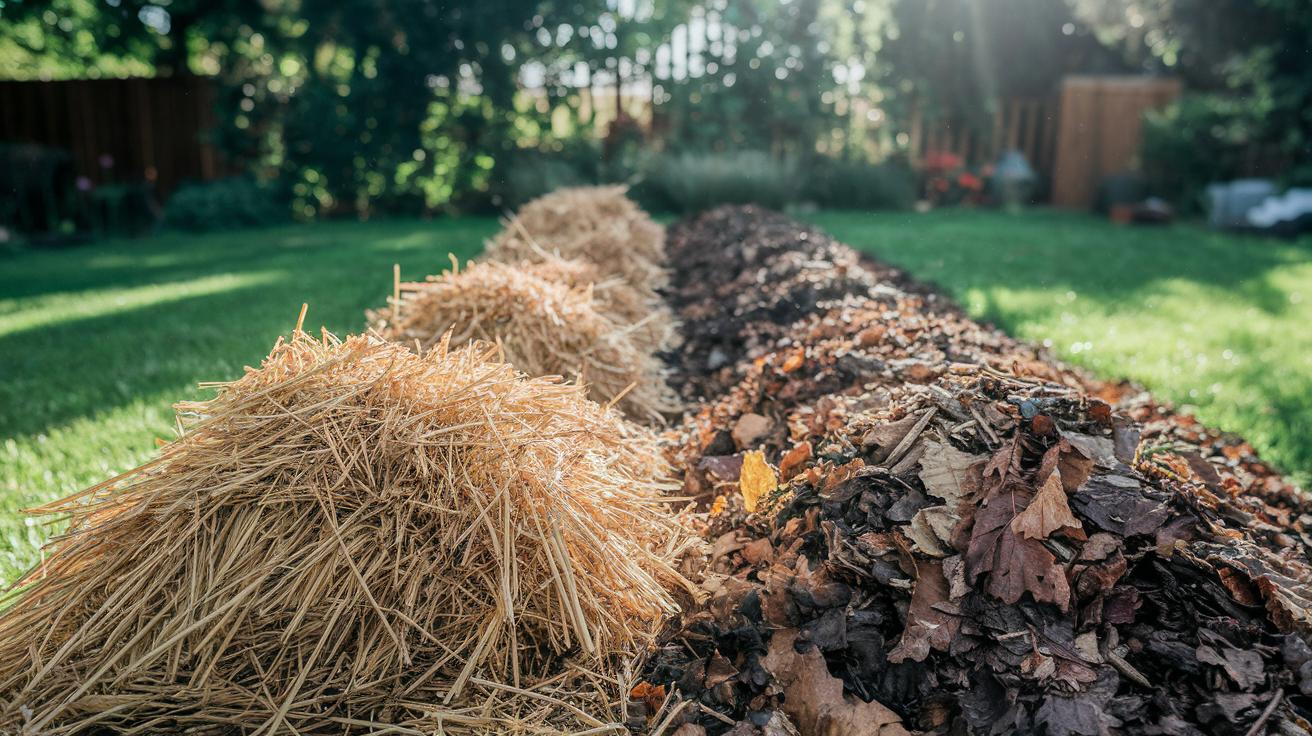
Straw mulch (dried plant stalks) blocks about 85 percent of new weeds in six weeks. Then it slowly breaks down over six to twelve months, feeding your soil. Just lay down clean, seed-free bales so you don’t bring in new weed seeds by accident. Straw is light and easy to spread by hand. But watch for little gaps – straw shifts if you don’t fluff and tuck it in, and tiny sprouts will sneak through.
Leaf mold (decayed leaves that enrich soil) holds about forty percent more moisture than straw mulch. It also boosts microbial life (tiny soil helpers) for healthier dirt. Shredded leaves make a snug mat that keeps baby weeds in the dark – classic seed germination prevention, right? But pile on whole leaves and they might smother each other and decompose unevenly. Mixing in sticks or garden trimmings helps water drain so your mulch layer won’t turn into a soggy barrier.
By the way, have you ever smelled fresh leaf mold under your trees? It’s like a cozy blanket for your garden.
Sourcing Tips:
- Choose straw labeled “clean” or “certified weed-free” at farm supply stores.
- Run fallen leaves through a mower or leaf shredder before using them as leaf mold.
- Store straw off the ground on a tarp or pallet to prevent mold and rodent nests.
- Keep shredded leaves covered until you’re ready to mulch, so they don’t wash away.
Grass Clippings and Animal Bedding: Circular Mulch Solutions for Weed Control
Have you ever thought of grass clippings as free mulch? Spread about an inch of fresh clippings over bare soil. That soft green blanket blocks about 75 percent of new weeds in just a few weeks. And because the clippings break down in two to four weeks, you can top up often without lugging heavy bags.
Aim for an inch of clippings every time you mow. It’s easy when you leave them right where they fall. You don’t even have to bag them. Just rake them flat, and you’ll keep your yard neat and your mulch snug.
Now for the fun part: animal bedding. If you have rabbit bedding (soft straw and wood chips), sprinkle it on top of your grass layer. This fibrous mix holds up for three to four months and keeps everything breathing. By the way, my cat loves hiding under those piles.
Older clippings from last season add extra food. They can supply about 15 to 25 pounds of nitrogen (nutrient that helps plants grow) per thousand square feet. But too much at once can cause nitrogen lock (when plants can’t take up that nutrient). So let your clippings air dry a day or two before you spread them, and mix in small twigs or straw bits to prevent smells.
This cycle turns waste into living mulch, cuts your costs, and feeds soil life.
Give it a try next time you mow and watch your garden flourish.
Layering Under Mulch: Cardboard, Newspaper, and Fabric Barriers for Weed Suppression
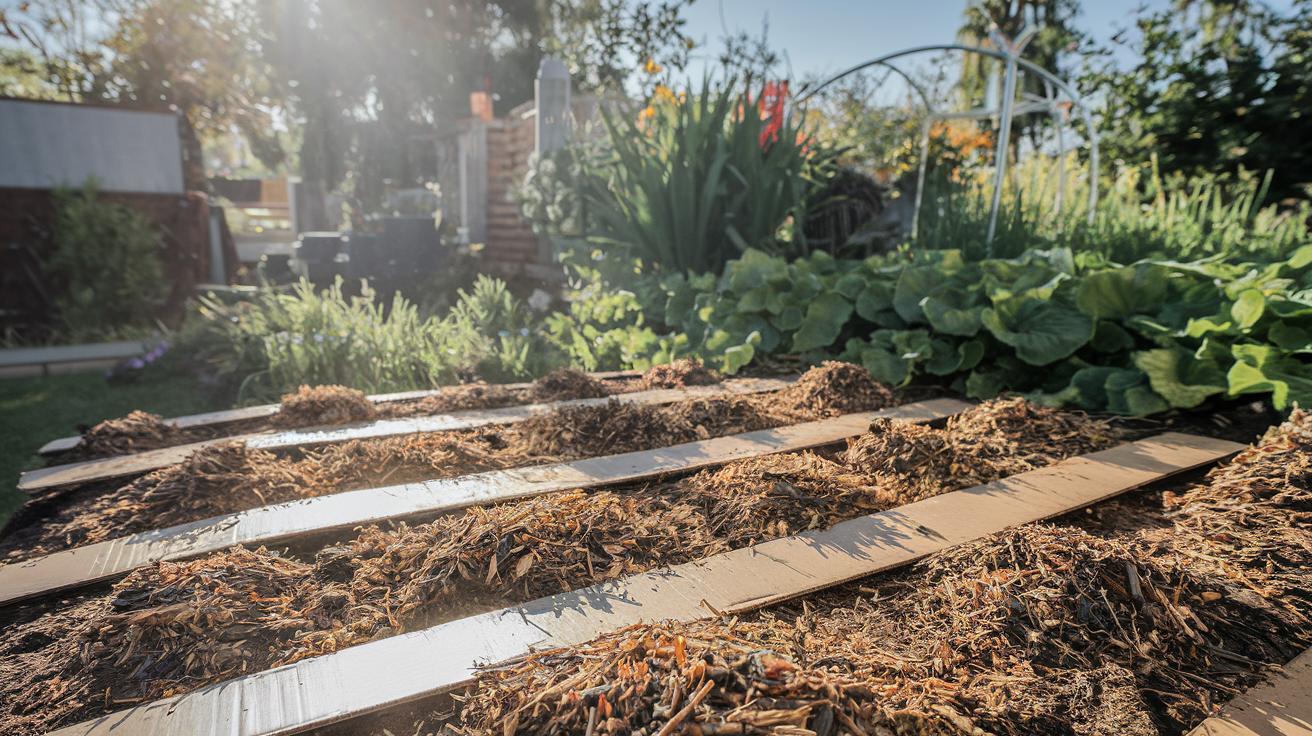
Have you tried layering stuff under your mulch to stop weeds? I have. Cardboard (that thick paper from shipping boxes) blocks almost all light. It sticks around for six to twelve months before it crumbles into the soil. I love how it makes weeding feel like a breeze.
Newspaper (those paper sheets you read over breakfast) works too. Stack ten sheets, wet them well, and you’ll see about 85 percent fewer weed sprouts. But heads up: it breaks down in around four months as worms and microbes pull it in.
If you’d rather set it and forget it, landscape fabric (a woven garden cloth) can keep weeds at bay for three to five years. But I’ve noticed it can slow water and air from reaching your soil, so you might need to water more gently.
Here’s how I layer each barrier so straw, wood chips, or compost-rich mulch stays snug and weeds stay shut out:
- Wet the barrier until it’s damp all the way through
- Overlap edges by at least six inches so nothing slips in
- Secure with garden stakes or pins
- Cover with two inches of organic mulch (straw, wood chips, or compost)
- Peek under the mulch now and then to patch any tears
Layering now sets you up for a season of easy, happy gardening.
| Barrier | Pros | Cons |
|---|---|---|
| Cardboard & Newspaper | They feed your soil as they break down and tuck right under any mulch. | You’ll need to refresh them more often and they can hold extra moisture if left bare. |
| Landscape Fabric | Keep weeds away for years and stand up in every garden cloth comparison for toughness. | It can block rain and air, so you may have to water carefully. |
Best Practices for Applying Organic Mulch to Maximize Weed Suppression
First, clear away old mulch and those pesky weeds. Grab a hand fork or hoe and pull out any sprouts by the roots so they won’t sneak back. Lightly dampen the soil until it feels like a wrung-out sponge. This gives the mulch something to grip onto.
Need extra help keeping weeds down? Lay down a thin layer of cardboard (flattened boxes work great) or a few sheets of newspaper. Just make sure they overlap so light can’t sneak through. Then spread your organic mulch (like wood chips, straw, compost, or grass clippings) on top.
Aim for an even layer about two to four inches thick. Two inches is enough to block light but still lets water drip through to your plants’ roots. Thicker than four inches can turn into a soggy mat that suffocates roots. I learned that the hard way when my parsley looked sad under a heavy pile!
When you’re spreading mulch, leave about two inches of bare soil around each stem. Plants need air flow at their base or they might rot. Plan to top up wood chips and straw once a year and add fresh compost or grass clippings twice a year. That way your mulch blanket stays fluffy and weed-free.
Watch out for common slip-ups. Piling mulch too deep can drown your plants and make water pool on the surface. Never let mulch touch trunks or stems or you could invite pests and rot. Fill in any thin spots with a rake and give your beds a quick once-over each month.
A neat, uniform blanket of mulch will keep weeds in the dark and your garden looking sharp all season.
Environmental and Economic Factors in Organic Mulch Selection
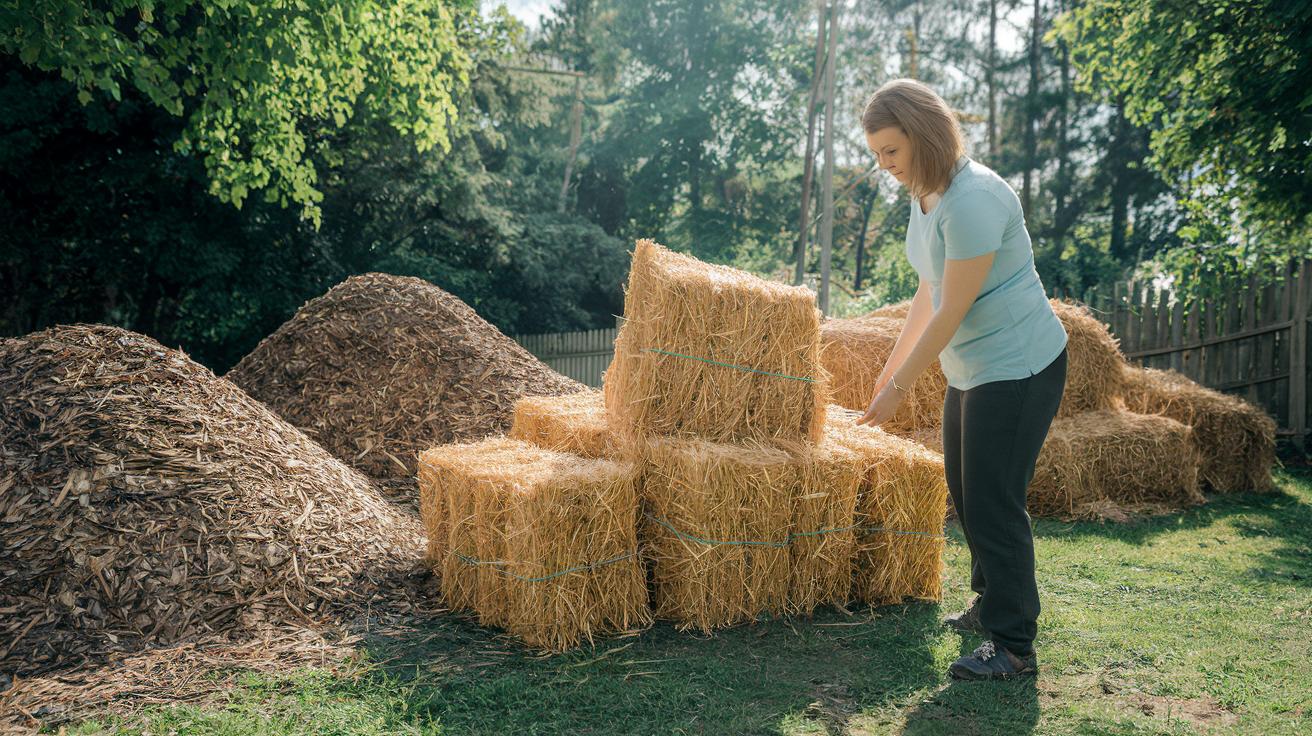
So you’re sizing up mulch options for your beds. Straw bales run about $15 to $30 a bale. Wood chips cost roughly $20 to $35 per cubic yard.
And compost-based mulch (decayed organic matter that enriches soil) sits around $25 to $40 per cubic yard. Landscape fabric (breathable ground cloth) is about $1 a square foot.
And what you choose really comes down to how much ground you’ve got and how often you wanna refresh the layer. I’m always weighing how fast each one breaks down and how much work I’m up for repeat seasons.
I’m all for organic mulches. They smother weeds, feed the tiny life in your soil, and lock carbon into the ground. Have you felt the soft crackle of straw underfoot?
Compost and wood chips boost biodiversity by creating cozy homes for beneficial insects (tiny pest-eaters) and earthworms (nature’s tillers). As they slowly break down, they turn into plant-feeding goodness.
But plastic mats? They might seem like a bargain, but they can bake the soil hot, send water running off, and leave nothing behind when you pull them up.
Oh! Municipal wood-waste mulch can be a real steal. It keeps tree trimmings out of landfills, cutting their share by about 20 percent.
Plus, if you mix in straw fresh off the field from local farms, you slash transport emissions and help nearby growers.
When you stack up cost, carbon footprint, and soil health, organic mulches usually come out on top over time.
Sourcing Tips for Bulk Organic Mulch
- Check with your city or county yard-waste program for discounted wood-waste mulch that keeps trimmings out of landfills.
- Drop by local farms after harvest for straw bales, and ask for discounted leftover straw.
- Compare prices at garden centers and co-ops when you buy wood chips or compost by the truckload.
- Browse resources like organic soil amendments for vegetable gardening to find compost suppliers and delivery options.
Final Words
We’ve run through top mulch options side by side, straw, wood chips, compost, grass clippings, cardboard, and saw how each packs a punch against unwelcome sprouts. We talked layer thickness, under-mat tricks, and simple steps to keep moisture in and weeds out.
Armed with budget-friendly choices and clear do’s and don’ts, you’re set to give your soil the care it craves. Embrace these low-fuss practices and watch your garden thank you.
Here’s to effortless green thumbs and discovering the best organic mulch for weed suppression that’ll keep your backyard thriving.
FAQ
What are the top organic mulch options for weed suppression?
The top organic mulch options for weed suppression are straw, wood chips, compost-based mulch, grass clippings, and a cardboard underlayer, offering 70–98% weed blocking with varying longevity and cost.
How does compost-based mulch control weeds and improve soil?
Compost-based mulch controls weeds by blocking 95% of sunlight, retains moisture, balances pH, improves soil structure, and attracts earthworms that further suppress weeds. It decomposes in 3–6 months.
What are the steps to apply compost-based mulch correctly?
To apply compost-based mulch, prepare soil by removing weeds, spread a 2-inch layer, water lightly, and refresh every six months. Avoid depths over 3 inches to prevent temporary nitrogen tie-up.
How do bark and wood chip mulches differ in weed suppression and lifespan?
Bark and wood chip mulches suppress 65–75% of weeds in the first season. Hardwood chips last about 12 months, softwood bark about 9, with depth recommendations of 3 inches for hardwood and 4 for softwood.
How do straw and leaf mold mulches compare in weed control and moisture retention?
Straw mulch blocks 85% of weeds in six weeks, lasts 6–12 months, but may carry weed seeds. Leaf mold boosts moisture retention by 40%, supports microbes, and can mat without shredding.
How effective are grass clippings and animal bedding as mulch?
Fresh grass clippings at a 1-inch layer suppress about 75% of weeds, decompose in 2–4 weeks. Aged clippings supply nitrogen. Rabbit bedding lasts 3–4 months but may compact if not mixed.
How do under-mulch barriers like cardboard, newspaper, and fabric work?
Cardboard blocks 98% of light for 6–12 months, newspaper (10 sheets) blocks 85% for about 4 months, while landscape fabric suppresses weeds for 3–5 years but limits water and soil life.
What best practices maximize weed suppression when applying mulch?
Best practices include clearing weeds, watering soil, optional underlayer, spreading mulch to a 2–4 inch depth, avoiding direct stem contact, and refreshing annually or biannually based on mulch type.
How do economic and environmental factors affect mulch selection?
Costs vary: compost $25–$40/yd³, straw $15–$30 per bale, wood chips $20–$35/yd³, fabric $1/ft². Organic mulches boost biodiversity and sequester carbon, unlike synthetic mats that may cause runoff.
Where can I source bulk organic mulch affordably?
Bulk organic mulch can be sourced from municipal compost programs, local farms, garden centers, or landscaping suppliers. Comparing delivery fees and quality helps balance cost, availability, and sustainability.

